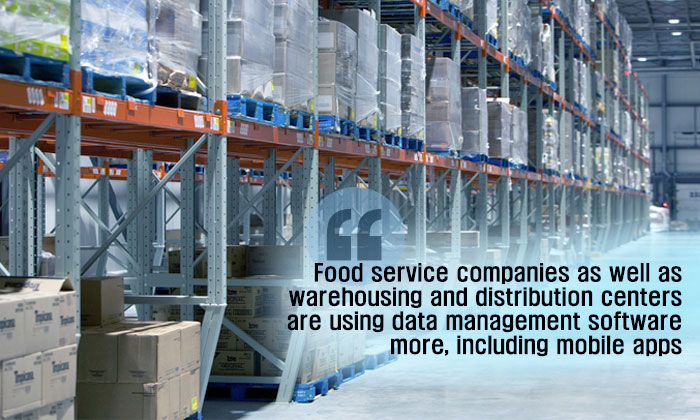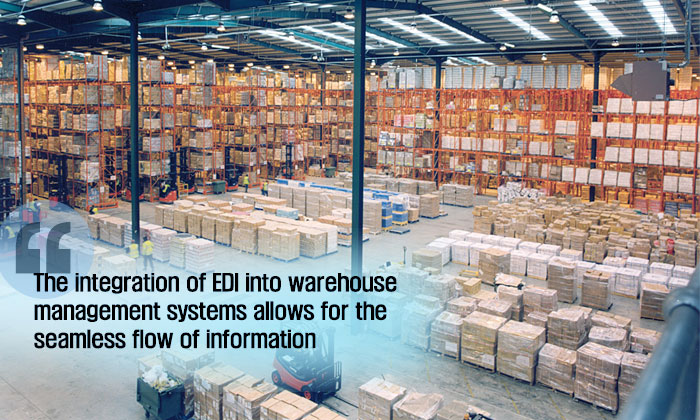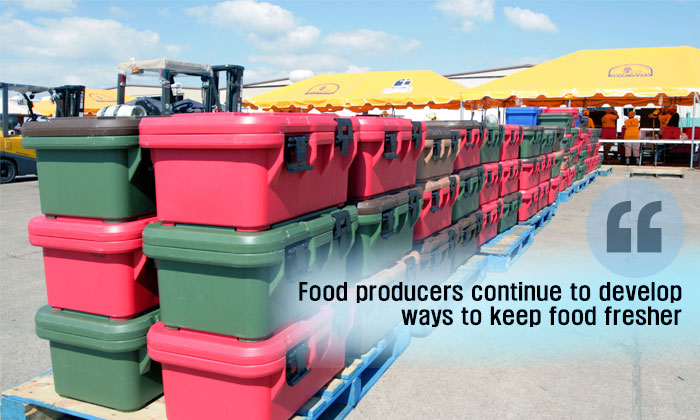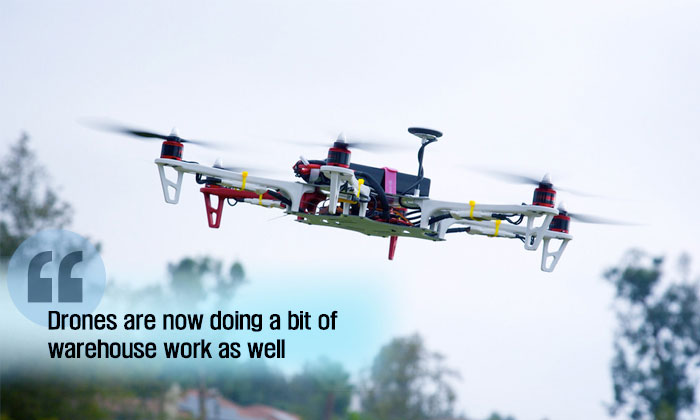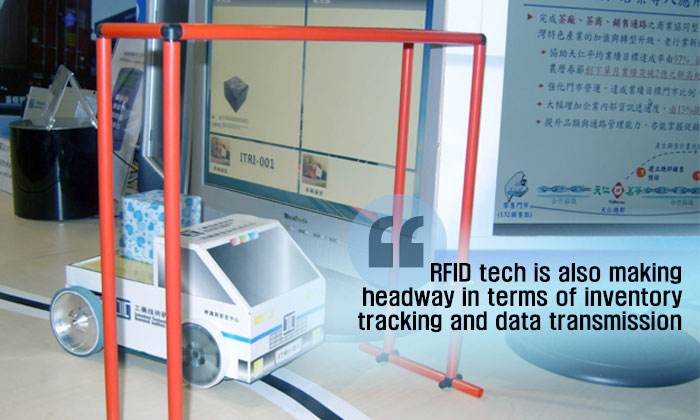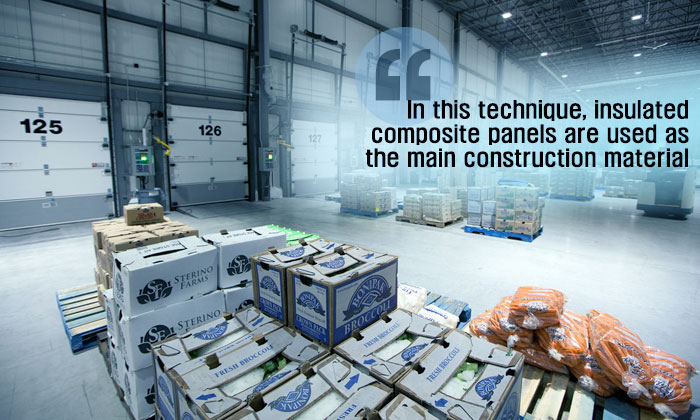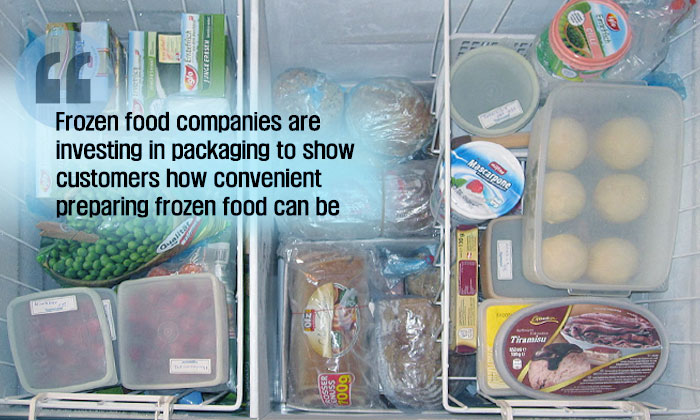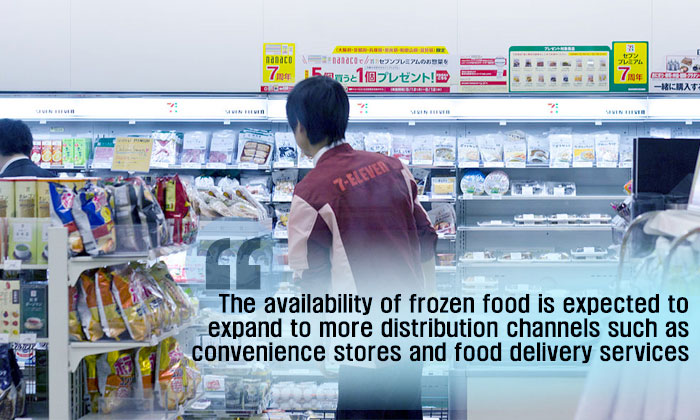Keeping it fresh: Solutions in frozen food warehousing to meet changing appetites
- Like
- Digg
- Del
- Tumblr
- VKontakte
- Buffer
- Love This
- Odnoklassniki
- Meneame
- Blogger
- Amazon
- Yahoo Mail
- Gmail
- AOL
- Newsvine
- HackerNews
- Evernote
- MySpace
- Mail.ru
- Viadeo
- Line
- Comments
- Yummly
- SMS
- Viber
- Telegram
- Subscribe
- Skype
- Facebook Messenger
- Kakao
- LiveJournal
- Yammer
- Edgar
- Fintel
- Mix
- Instapaper
- Copy Link
Posted: 29 June 2017 | Mischka Wolfert | No comments yet
In light of the dramatic changes in consumer demands, Mischka Wolfert examines the role of emerging technologies in improving frozen food warehouse efficiency.
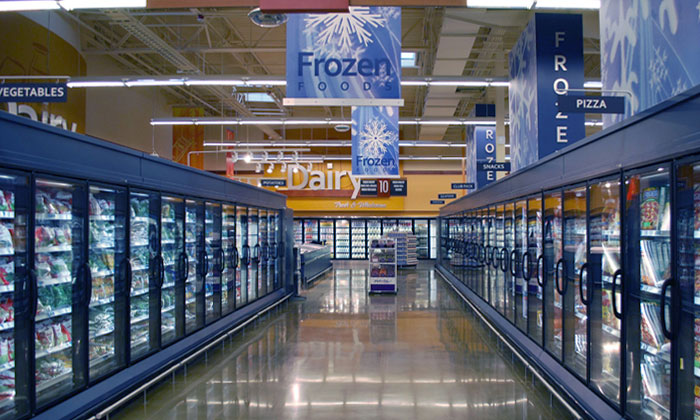

There is a rising market for fresh, organic, gluten-free, non-GMO, and antibiotic-free foods, triggering a greater need for more versatile food storage systems. To meet changing consumer demands, businesses in the frozen food industry are scrambling to develop the best warehousing solutions and invest in materials handling equipment for their facilities.
Frozen food suppliers will do well to study industry trends and do market research to identify gaps that they can fill. For example, one of the challenges in the food and beverage warehousing industry is managing a wide range of temperature zones to store the different types of foods consumers want. Bringing these to distribution channels in the freshest condition possible is another logistical challenge.
Another opportunity companies can take advantage of is one that was observed during the World Travel Catering & Onboard Services Expo in 2015: the demand for new in-flight food offerings. New Food Magazine reported that visitor feedback from the expo showed a genuine interest in ice cream in particular, so the airline industry is one area where frozen food suppliers can definitely expand their business horizons to.
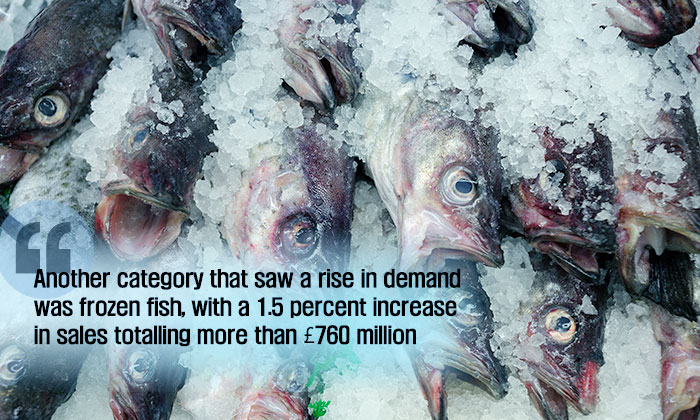

By looking into the latest industry trends, as well as the innovations and solutions that some of the world’s top food service companies are using, we will be able to paint a picture of what the future holds for the frozen food industry.
3 key industry trends and their impacts on frozen food warehousing and supply
Consumer appetites are rapidly evolving, presenting food suppliers with new challenges. Foodservice companies would need to increase the efficiency of their operations and make improvements to their warehousing and supply chain processes to meet those industry demands.
The top three key trends in the foodservice industry and their impacts on warehousing and supply chain operations are as follows:
- Diversified consumer preferences
Consumers continue to look for food that fit their lifestyle and nutritional needs, such as gluten-free, non-GMO, and organic food products, among others. In the UK for example, data from market research company Kantar Worldpanel shows that the most popular food category with consumers in 2016 was frozen confections, with total sales exceeding £300 million. That’s a 7 percent increase from the previous year.
Aside from frozen confectionery, another category that saw a rise in demand was frozen fish, with a 1.5 percent increase in sales totalling more than £760 million. Market experts predict that sales in these two food categories will continue to increase in the next five years.
The market for frozen fruits and vegetables also continues to grow. Global Industry Analytics conducted a study where it notes that the market for frozen produce “is projected to reach 28.2 million tons by 2020.” In the United States, frozen fruits and veggies are considered to be healthy options and key components to nutrient-rich family meals.
“Waistline watchers have found a friend in the numerous low-fat frozen food offerings,” says the Frozen Food Foundation.
The same heightened demand is seen in frozen meals, which provide convenience to consumers with busy, hectic lifestyles.
Along with a greater transparency and traceability about how these kinds of foods are processed and where/by whom, this would entail a more dynamic approach in terms of network management.
With this demand, companies are expected to source food from several regional suppliers in order to meet the demand for fresher produce, effectively reducing costs and reducing the risk that perishables will spoil in transit. Optimising systems may also be done by moving inventory among stores as opposed to handing it over to and from distribution centres, keeping supermarket shelves stocked and consumers happy.
- Supply chain modernisation
As supply chains strive to meet consumers’ changing appetites for diverse kinds of food, companies continue to find ways to use technology – both hardware and software – to modernise their facilities and processes.
Foodservice companies as well as warehousing and distribution centres are using data management software more, including mobile apps. Everyone across the supply chain is beginning to be connected digitally, allowing companies to take orders, coordinate supply and delivery, track inventory, and forecast demand.
This trend impacts how managers and operators look at their business, making their gazes shift inward to see how things can be modernised to meet industry needs. For instance, addressing the consumer demand for different types of frozen food would involve a more careful planning of warehouse spaces for the accommodation of different temperature zones.
This move toward supply chain modernisation impacts how warehouse operations are done and which materials handling equipment are used to not only improve workplace efficiency but also ensure worker safety.
- Innovative food storage solutions
The different kinds of frozen food in demand today require different kinds of storage. Another industry trend that continues to be seen is the innovation in food storage technologies, warehousing solutions, and refrigerated transportation, which would make companies adopt the tech needed to gain a competitive advantage.
Food producers continue to develop ways to keep food fresher through new freezing and storage techniques including innovative, air-tight packaging.
The introduction of new technology, spurred along by studies on workplace ergonomics, may also prompt many companies to finally overhaul how they operate, especially in terms of materials handling, warehousing, and logistics.
Stepping up to the frozen food plate with warehousing tech
Technological innovations are being developed and used across different industry sectors–robots are doing surgery and assisting shoppers, drones are starting to deliver packages, smart home speakers are helping people organise their day-to-day lives. Businesses, including companies involved in the frozen food supply chain, are steadily going digital, automating work processes wherever possible and implementing the latest advancements in technology to meet industry demands.
Here are some of the best tech innovations around the world used by warehousing companies.
EDI technology
Electronic Data Interchange or EDI helps companies work with big data. This technology enables the exchange of information between two different computer systems using a shared standard document format.
The integration of EDI into warehouse management systems allows for the seamless flow of information and more efficient collaboration among business partners that may have different systems. EDI makes it faster and easier for companies to manage purchase orders, warehouse shipping orders and stock transfer receipts, as well as collate shipping and inventory advice.
Drone revolution
Drones are being used to capture aerial views of everything from destination weddings to concerts, survey dangerous areas, deliver small packages, shoot movies, and even keep an eye on wildlife. With companies on the road to increase levels of automation on facilities, drones are now doing a bit of warehouse work as well.
DroneScan, a startup based in Africa, developed drones that can scan bar codes in warehouses, which are often stacked to the roof with inventory. With DroneScan’s airborne data collection system, large warehouses are provided with an alternative to traditional, labor-intensive methods requiring large materials handling equipment and hundreds of hours.
The drones are used to scan bar codes on pallets, and the location of each item is then entered into the warehouse management system. The drone technology saves time and eliminates safety risks associated with manual methods of taking inventory in hard-to-reach warehouse areas.
RFID tracking
Radio Frequency Identification or RFID technology, which makes use of electromagnetic fields to identify and track tags attached or embedded into objects, is already being used in several industries, such as airlines for tracking passenger bags, toll roads for collecting fees, and seaports for tracking shipping containers. RFID tags have even made their way to Fender guitars, so repair shops, dealers, and the police can easily verify ownership.
Indeed, RFID technology can be used to track any number of things. In the warehouse, RFID tags can be seen attached on stock, providing increased transparency and stock visibility as well as ease of inventory. The ability to track stock also discourages theft.
Coupled with drone technology, RFID tech is also making headway in terms of inventory tracking and data transmission. One of the groups doing R&D on drone-RFID tech is the Fraunhofer Institute for Material Flow and Logistics in Germany, which has been working on a project called InventAIRy. The project pairs up the flying robots with RFID scanners for the automatic location of products and warehouse stock. Similar drone-RFID projects present companies with a practical and cost-effective solution for warehouse inventory management.
Single envelope construction
One innovation that directly benefits companies specialising in frozen food is the “single envelope” construction technique, which makes use of insulated composite panels to increase warehouse durability, energy efficiency, and airtightness–all a must for cold storage facilities.
Cold storage warehouses traditionally involved the construction of two buildings. One building is inside the other, creating a void between the external “envelope” and the internal cold store roof. The entire structure can be time-consuming to construct, not to mention expensive because of the additional heating/cooling and fire prevention that need to be done. It’s not thermally efficient nor sustainable.
Coldstore designer and manufacturer ISD Solutions presents a new method for constructing warehouses: single envelope construction. In this technique, insulated composite panels are used as the main construction material. It eliminates the need for box-in-box construction and addresses the problem of thermal bowing, in which wall panels become distorted when the exterior metal skin is exposed to heat.
Using low-carbon composite panels also speeds up construction by 20 percent, and with the inherent strength of the material, the need for secondary steel support in warehouses is reduced. Single envelope construction for warehouses provides companies with significant savings in the cost of construction and maintenance, and we see it getting more traction in the industry in the years to come.
High-tech frozen food packaging
Frozen food companies are investing in packaging to show customers how convenient preparing frozen food can be. Features such as microwavable bags, reusable zip closures, and the like, along with eye-catching graphic designs, make frozen food more appealing to consumers.
One of the companies focusing on convenient, food-safe packaging is Emmerson Packaging, which offers frozen food suppliers a variety of options such as the MicroPack. The MicroPack lets consumers quickly and safely steam-cook frozen vegetables in a microwave.
Frozen food companies can utilise Emmerson’s packaging tech in their facilities without having to refit or modify their existing packaging equipment, saving on costs while providing more value to consumers.
The tasty future of frozen food
What all of these trends and solutions in the frozen food sector tell us is that the industry continues to grow at a rapid pace. Consumer demands are becoming more varied, not only in terms of culinary preferences but also portability and convenience–and businesses are moving fast to keep up.
What about the future? Based on the current trends and innovations in frozen food industry, here’s a preview of what’s to come.
Product innovation will lead to a continued demand
The innovations in frozen food storage, warehousing, freezing techniques, and packaging that provide consumers with more choices will result in a greater demand for frozen food products. As lifestyles grow ever more diverse, there will be a continued preference for easy-to-prepare but nutritious food. Consumers will purchase frozen food items not just because of convenience, but also because these are natural, flavorful, and healthy.
The availability of frozen food is expected to expand to more distribution channels such as convenience stores and food delivery services–the latter because of the continued growth of online shopping. This will lead to businesses being meticulous about which frozen food supply chain companies to work with to ensure the most efficient methods of product and order processing and delivery.
The frozen food market will share its success with chilled
The chilled food sector will see a rise in growth due to market predictions that consumers will also demand high-quality chilled products. With the developments in the temperature-controlled food production industry, consumers aren’t just looking for frozen food.
“Whether that is in ingredient form or as the final product which is brought up to temperature before hitting the supermarket shelves – the reality is, frozen and chilled go hand-in-hand,” says Kevin Hancock, the managing director of cold storage company Rick Bestwick.
Rick Bestwick has been handling more chilled food items than ever before, a sign of what the future has in store for food technology. This would mean that aside from facilities that are able to freeze food, there would also be a need for more facilities and precise microwaving equipment that can “up-temper” frozen products and thaw these to optimum chilled temperatures.
“Chilled has been on the rise for many years, but it is clear that it will continue to enjoy growth for many more to come,” Hancock adds.
Freeze forward
Seeing the continued success frozen food has achieved in today’s market doesn’t mean businesses should rest on their laurels. By recognising the upward trends in consumer preferences and food technology, companies across the frozen food supply chain would be able to anticipate and meet industry demands by improving their procedures and logistics, as well as their food processing and warehouse facilities.
Making more frozen food products available to consumers will spur market growth. In a report on the frozen food industry in the United States, Packaged Facts estimates that the frozen food segment of the market will reach $23 billion in sales by 2019. And as the United States is the world’s gauge for what’s up and coming, we can confidently say that the same upward trend is the same in other regions.
Now, is your business ready to claim a slice of that frozen pie?
References
- https://www.newfoodmagazine.com/news/20246/the-skys-the-limit-for-frozen-foods/
- https://www.partnerlogistics.eu/looking-back-at-the-top-10-frozen-food-trends-in-2016
- https://www.partnerlogistics.eu/the-future-of-the-frozen-food-industry-/partner-logistics-sheds-light-on-energy-efficiency
- http://www.hansonlogisticsgroup.com/six-frozen-food-facts-2017
- http://www.lifehack.org/403615/6-awesome-ways-drones-are-being-used-today
- http://www.dronescan.co/
- http://www.itproportal.com/2016/06/23/the-many-amazing-uses-of-rfid-technology/
- https://www.fraunhofer.de/en/press/research-news/2014/december/the-flying-inventory-assistant.html
- http://www.isd-solutions.co.uk/wp-content/uploads/2013/11/ISD-Solutions-Special-Projects-Division-Brochure-2013.pdf
- http://www.emmersonpackaging.com/products/micropack/
- https://www.partnerlogistics.eu/positive-outlook-for-frozen-food-supply-chain/future
- http://www.fsdf.org.uk/business-news/frozen-food-specialist-says-chilled-future-growth/
- https://www.foodmanufacturing.com/news/2015/01/future-frozen-foods-market-and-how-natural-products-could-save-it



